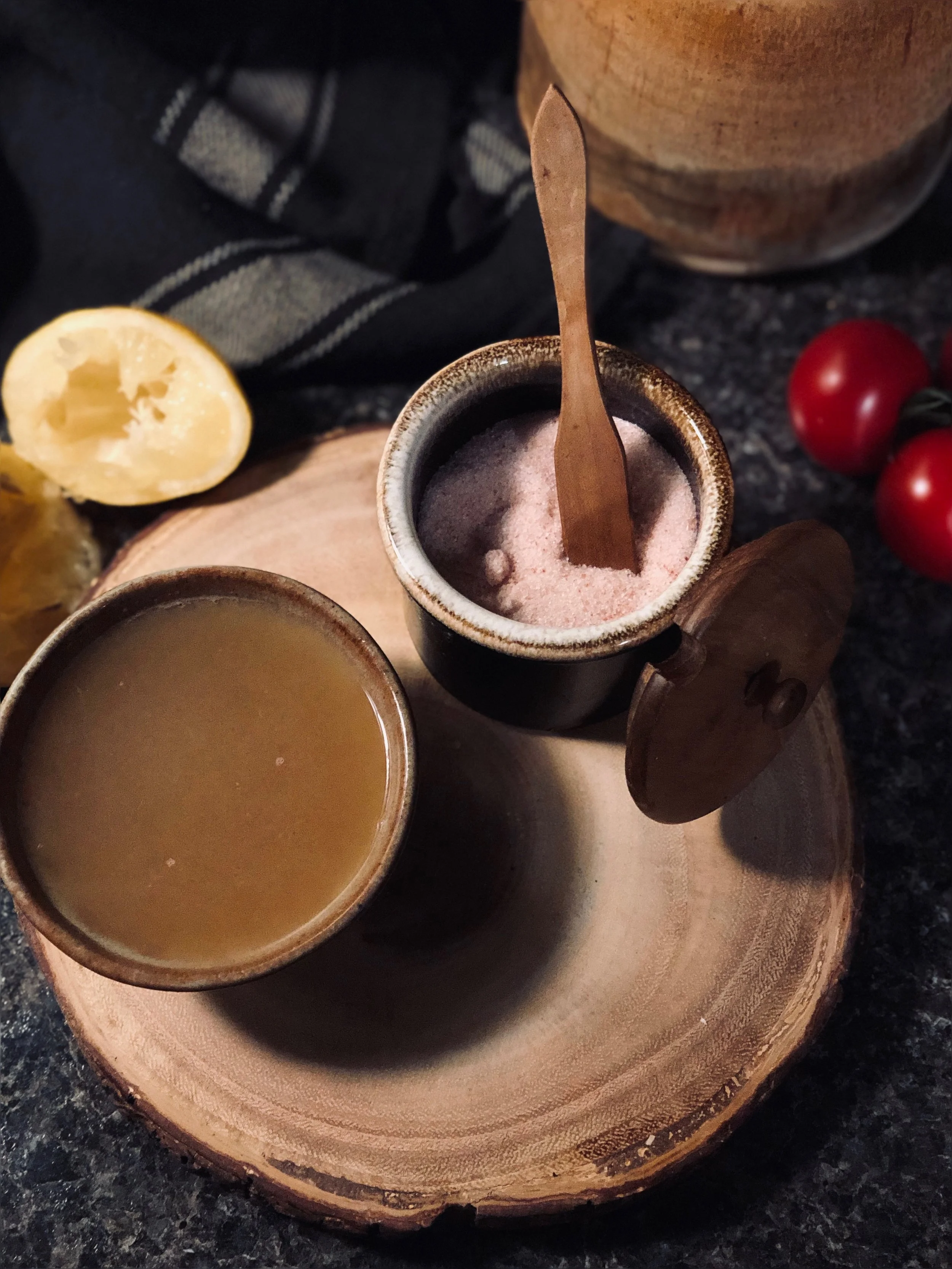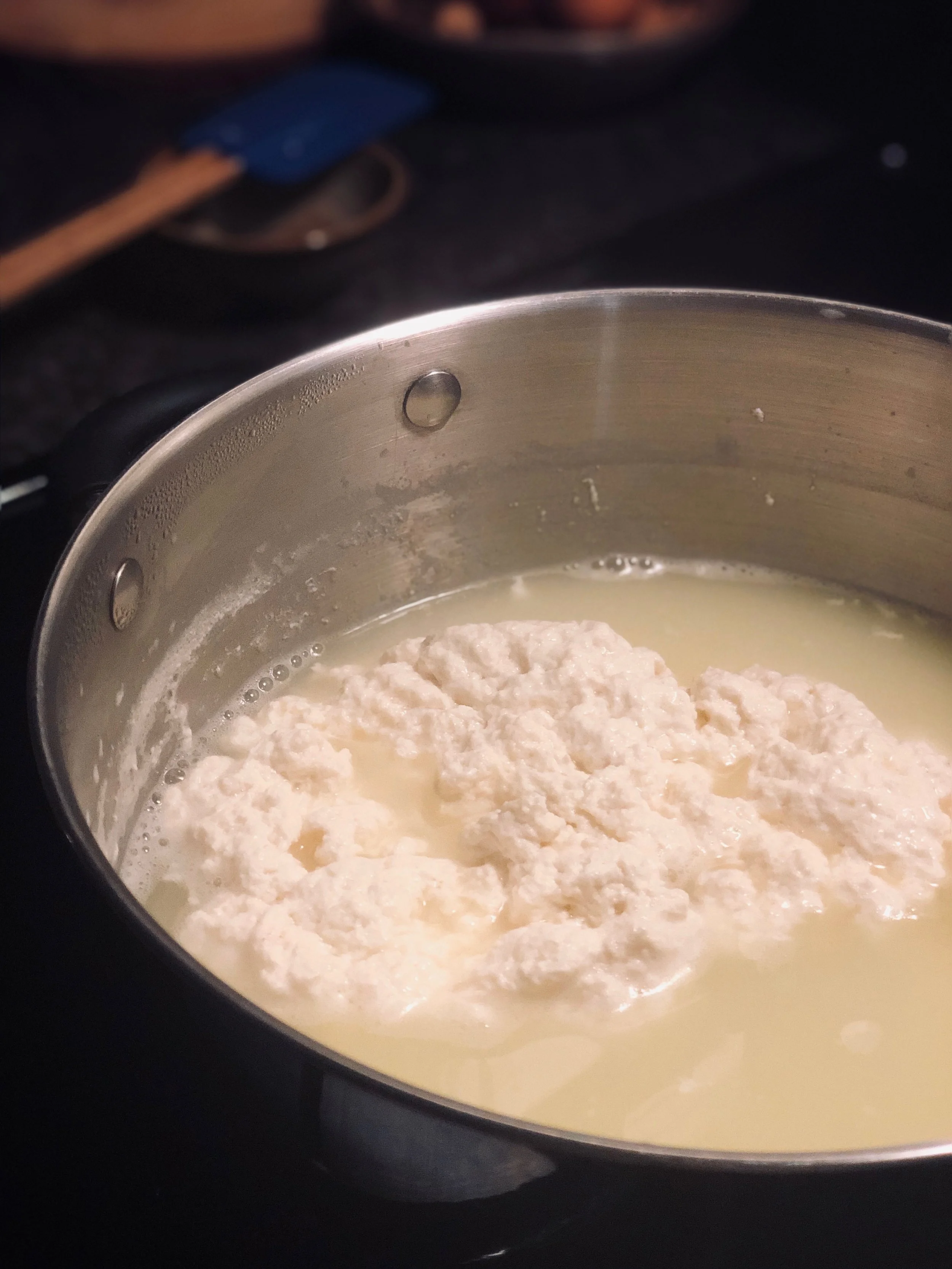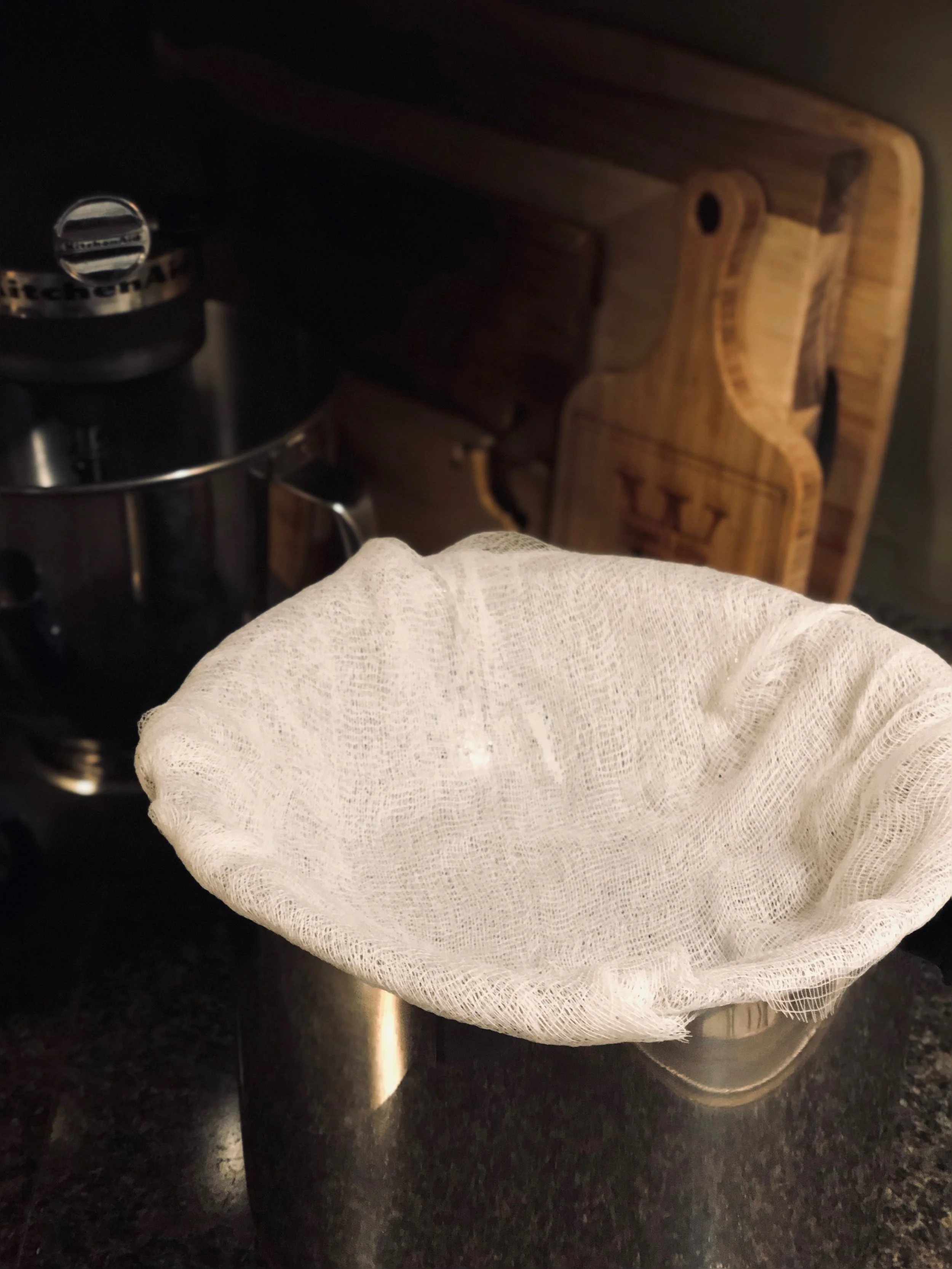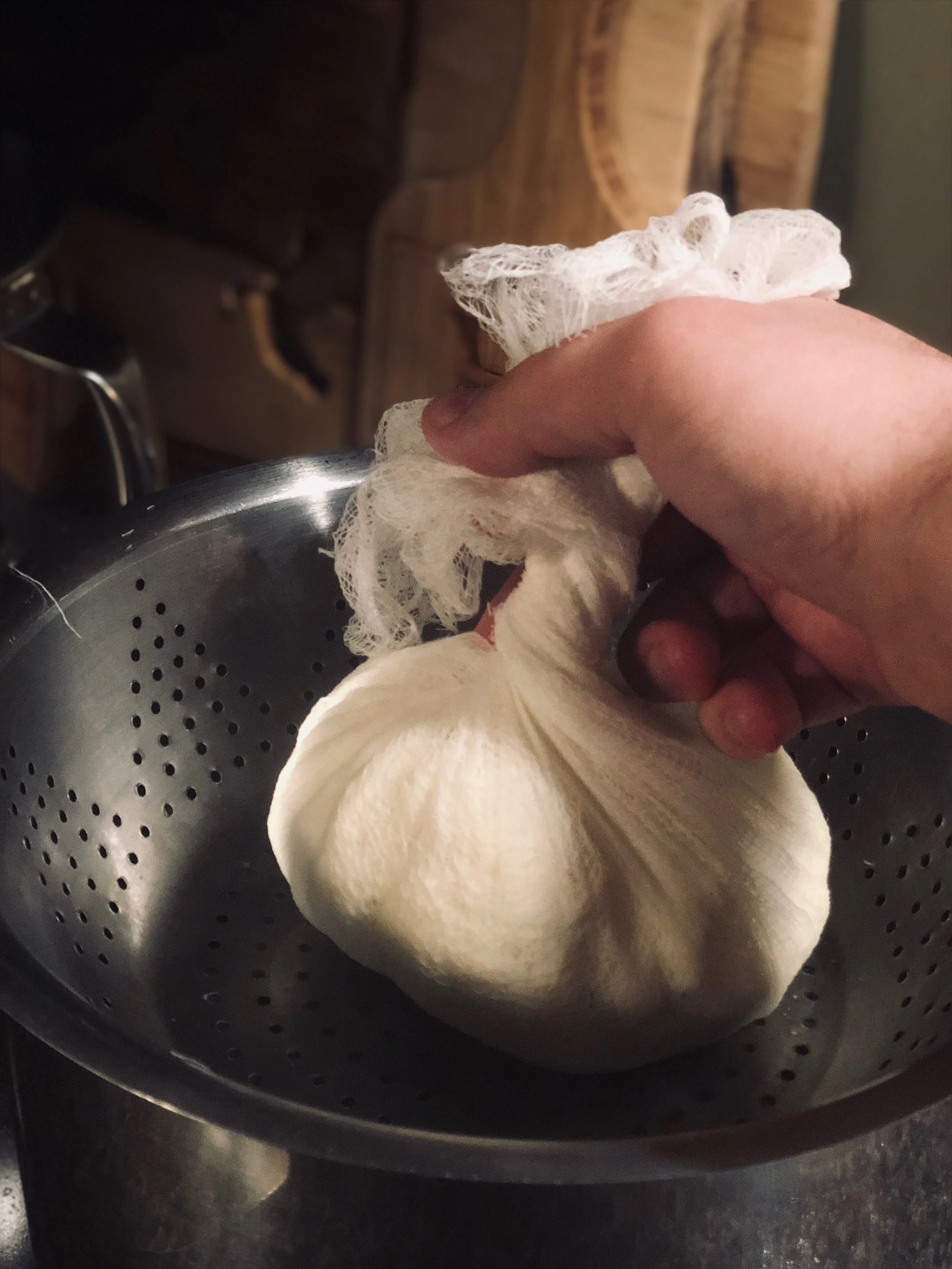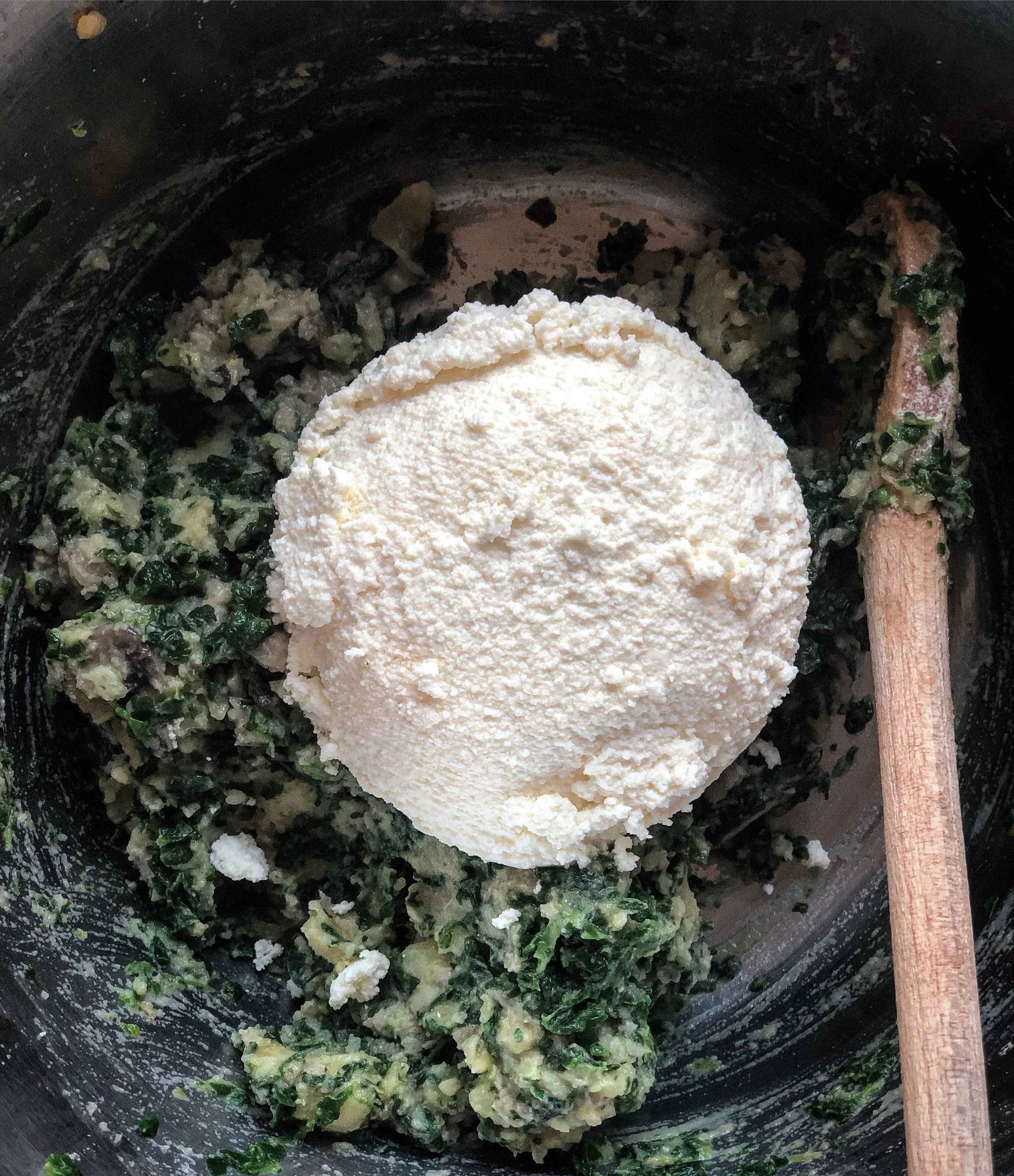Homemade Ricotta Cheese
I remember the first time I was able to cross this bugger off my list of life goals.
It was so simple and easy, it almost felt like I was cheating. Was this not the time consuming, energy consuming, LIFE consuming task that I thought it would be? Isn’t there some sort of secret society of dairy experts that exclusively own the rights to making fresh cheese? The answer is no.
A pot of milk and some other bits were suddenly transformed into a firm yet creamy bundle of joy in about 30 minutes, and yet, it took longer for me to half-ass a load of laundry and reluctantly vacuum the rugs than it did to make cheese.
Of course, we're talking about fresh cheese, not “aged like a fine wine for 500 years” king of cheese… but still.
Growing up with the influence of my German-dairy-farmer-family, I felt inspired one day in my late teens to test the theory of this kitchen staple — that milk, acid and patience does, in fact, make cheese. Feeling confident with the echoes of hundreds of cheese making hausfraus before me, I tackled my quest and made my first batch.
“Wait… is this cheese?” I asked myself while peering down at the crumbly white mass.
“Looks like you accidentally made feta” said my optimistically kind roommate.
… It wasn’t feta.
If you crumbled up packing peanuts and haphazardly sprinkled them onto a bitter salad with zero dressing, this was equally as appetizing.
Many years would pass before my next attempt. But I’m happy to say that this boy can whip up a couple cups of fresh cheese with ease, and so can you.
Here's the thing, Ricotta is basically a glorified farmers cheese, easier to make but sounds fancier, even though it literally just translates to “re-cooked”. How glamorous. Leave it to the Italians.
Traditionally, Italian Ricotta cheese is made with sheep’s milk; left over whey from previous cheese-making sessions; acid, such as vinegar or lemon juice; and salt. The taste is divine, but not as easy to re-create here in the US, as sheep’s milk is not a popular store-shelf staple. But if you’re in an area where you can find local sheep’s milk (or goat’s milk), by all means, give it a go!
Still, this version is wonderfully versatile and has many variations that have circled farmhouse kitchens all over Europe and the US for many years. Naturally, I try to push for homemade as much as possible rather than relying on what comes in a plastic tub at the grocery store, as they often contain artificial flavors, pastes, gums and preservatives to help keep it all together. Not necessary.
In any case, I encourage you to try this, and next week, you can try my recipe for Homemade Ravioli.
Guten Appetit!
Recipe: Homemade Ricotta cheese
Makes:
2 Cups
Ingredients:
1/2 gallon whole milk, 1,5L (preferably raw milk, but anything that is not UHT will do)
1/3 cup lemon juice, 80mL (or distilled white vinegar)
1 tsp salt, 1 Teelöffel
What you need:
Large Pot (4 quarts or more is fine)
Cheese cloth
Strainer
Mixing bowl
Slotted spoon
Kitchen Thermometer (**Note: I confess that I’ve never actually used a thermometer as I was taught using the “just eyeball it” method. However, looking back to my “feta” story above, a thermometer would have been a smart investment at the time.)
Let’s get started:
Warm the Milk
Pour all the milk into the pot and set it over medium heat. Let it gradually warm up to about 190°F. Once you’re there, you’ll notice the milk begin to foam and get steamy, this is perfect. If it starts to boil, remove it from the heat.
Add the Lemon Juice & Salt
Remove pot from heat and pour the lemon juice and salt. Stir gently to combine.
Netflix & Chill
You’re almost done! Now go take a break and leave the pot to sit uncovered and undisturbed for about 10-15 minutes. Around this time, you’ll start to see some curds and some watery yellowish liquid whey underneath. You can use your slotted spoon to check. If you still notice some milk that hasn’t separated, just add another tablespoon of juice or vinegar and wait another few minutes.
Strain the Curds
Take your mesh strainer and line it with 2-3 layers of cheesecloth and set it over your mixing bowl. Gently pour pot over strainer. Click here to see what you can do with your left over whey!
Drain the Curds
If you want, you can stop here and let the cheese sit in the strainer for an hour or so to let most of the liquid drain out on it’s own. If you’re impatient (just kidding), go ahead and gather the ends of the cheesecloth and twist until it tightens around the ball of cheese. This will help squeeze out the liquid faster.
Now you have your first Homemade Ricotta! Wasn’t that easy?
Ok so what will you do next? Fill some Homemade Ravioli? How about a Cheesecake? (Recipes coming soon).
Maybe throw in some herbs or spread on toast with honey or jam? Let me know in the comments!




